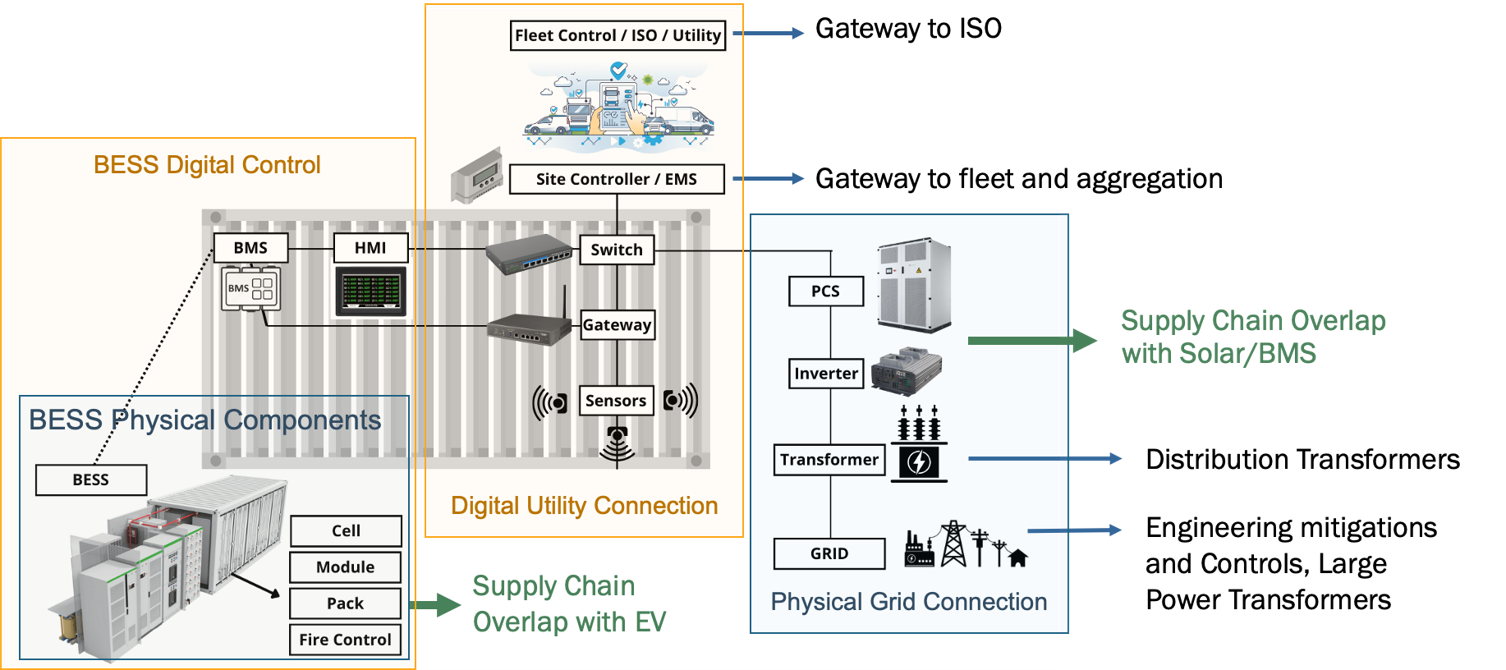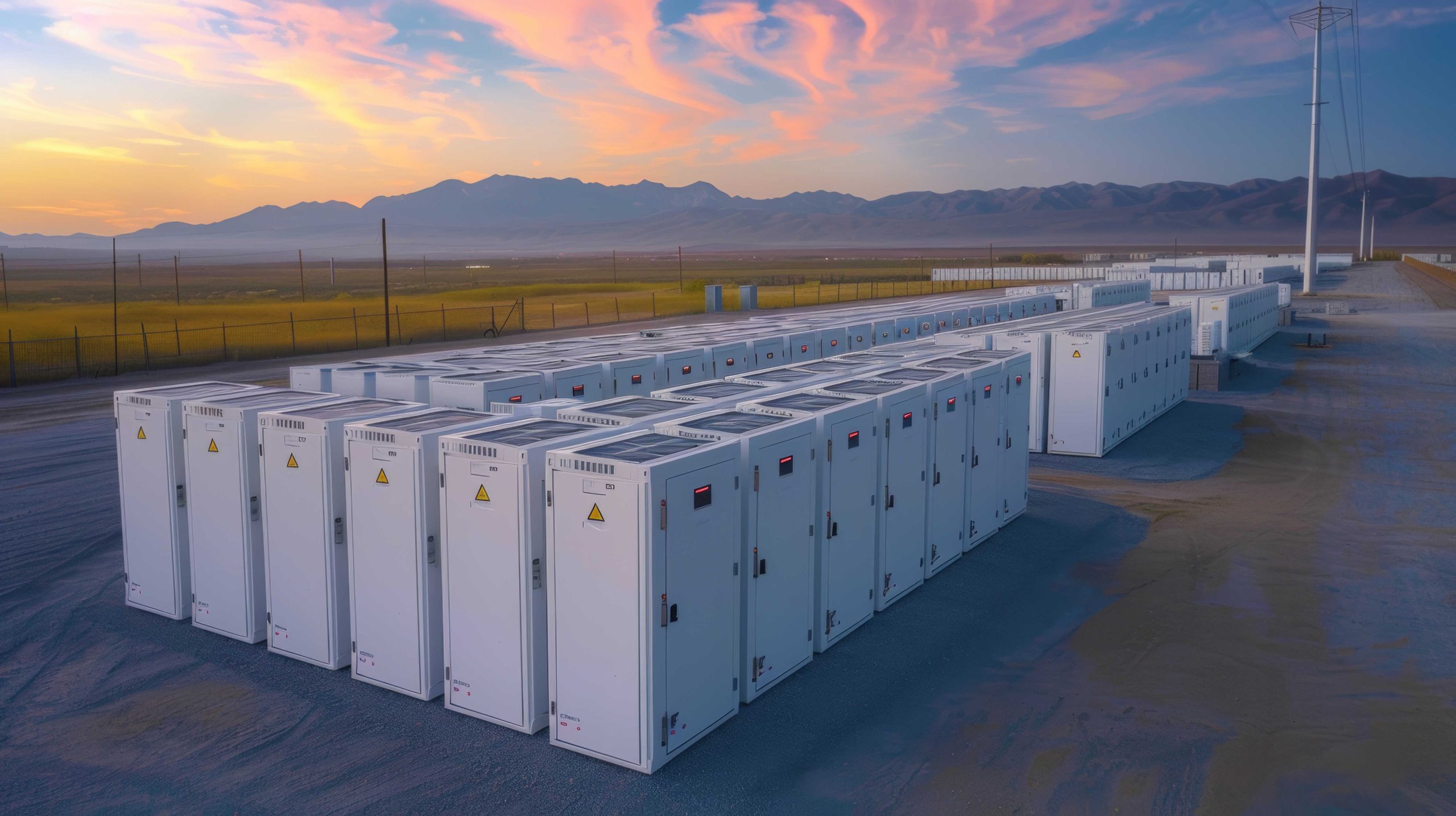Battery & Energy Storage Systems
Center for Securing Digital Energy Technology
Why BESS and Digital Energy Systems Matter
Battery energy storage systems (BESS), inverters, and associated digital equipment are integral pieces of interdependent energy delivery systems. These systems are crucial for delivering resilient energy, providing fast ramping, emergency discharge, generation, and operational support to the electric grid. Despite advancements in securing raw and critical materials supply chains, the focus on digital control systems has often been overlooked, creating significant cybersecurity risks.
Approach to Supply Chain Security
Comprehensive Risk Assessment
INL employs a systems-of-systems approach to evaluate the cybersecurity risks of various components within digital energy systems. By assigning cyber criticality scores, INL helps prioritize which components require immediate attention and long-term security measures. This method ensures a holistic view of the supply chain, focusing on both digital elements and raw materials.
Global Dependencies and Risks
The global energy market has created dependencies on foreign entities for critical components like inverters and batteries. While this offers technological advancements, it also introduces vulnerabilities such as supply chain disruptions and cybersecurity threats. Nearly 100% of battery material and over 70% of power electronic control systems for batteries are produced by the People’s Republic of China. Potential risks include:
- Introduction of backdoors or security flaws.
- Counterfeit components.
- Lack of transparency in software origins.
- Weak vendor security practices.
To mitigate these risks, INL emphasizes strategic diversification, robust cybersecurity measures, and fostering domestic innovation.

Operate Securely around Risks Today; On-Shore into the Future
The Department of Energy (DOE) offers capabilities to mitigate the highest-consequence Battery Energy Storage System (BESS) risks in the short term, while the nation builds a long-term strategy for onshoring the supply chain.
SUPPLY CHAIN SOLUTIONS
10+ Years
The Bipartisan Infrastructure Law investments aim to boost domestic production of advanced batteries and battery materials over the next decade.
However, much of the investment has focused on battery cells rather than the digital control technology, which poses greater cyber risks. Increased focus is needed to onshore this critical aspect of the supply chain.
POLICY & REGULATORY SOLUTIONS
1+ Years
Policy tools can provide greater visibility and control over digital infrastructure.
Policy solutions include providing the right to inspect foreign components for vulnerability and control, developing international cyber-secure manufacturing agreements, and U.S. supply chain incentives for power electronics.
CYBER-INFORMED ENGINEERING DESIGN SOLUTIONS
Now
DOE's technical tools and capabilities can be used to secure and mitigate the highest-consequence digital supply chain scenarios now.
Criticality of BESS Components
Prioritization and Mitigation
INL assigns cyber criticality scores to BESS components based on their potential impact. Key components identified include:
- Power Conversion System: Essential for two-way energy flow and communication with higher-level systems.
- Battery Management System: Critical for health and safety, though can be isolated from communication.
- Inverters and Site Controllers: Important for overall system operation.

Consequence Analysis
The consequence analysis is used to prioritize mitigations, focusing on reducing the likelihood of worst-case scenarios through the Cyber-Informed Engineering methodology.
Additional Resources
- Securing Digital Energy Infrastructure: Procurement, Contracting, and Supply Chain Risk Management Guidance
- CIEBAT: Cyber-Informed Engineering (CIE) Tool for Battery Energy Storage System Analysis
- Application of Cyber-Informed Engineering for Protecting BESS
- DOE Battery and Energy Storage Supply Analysis


